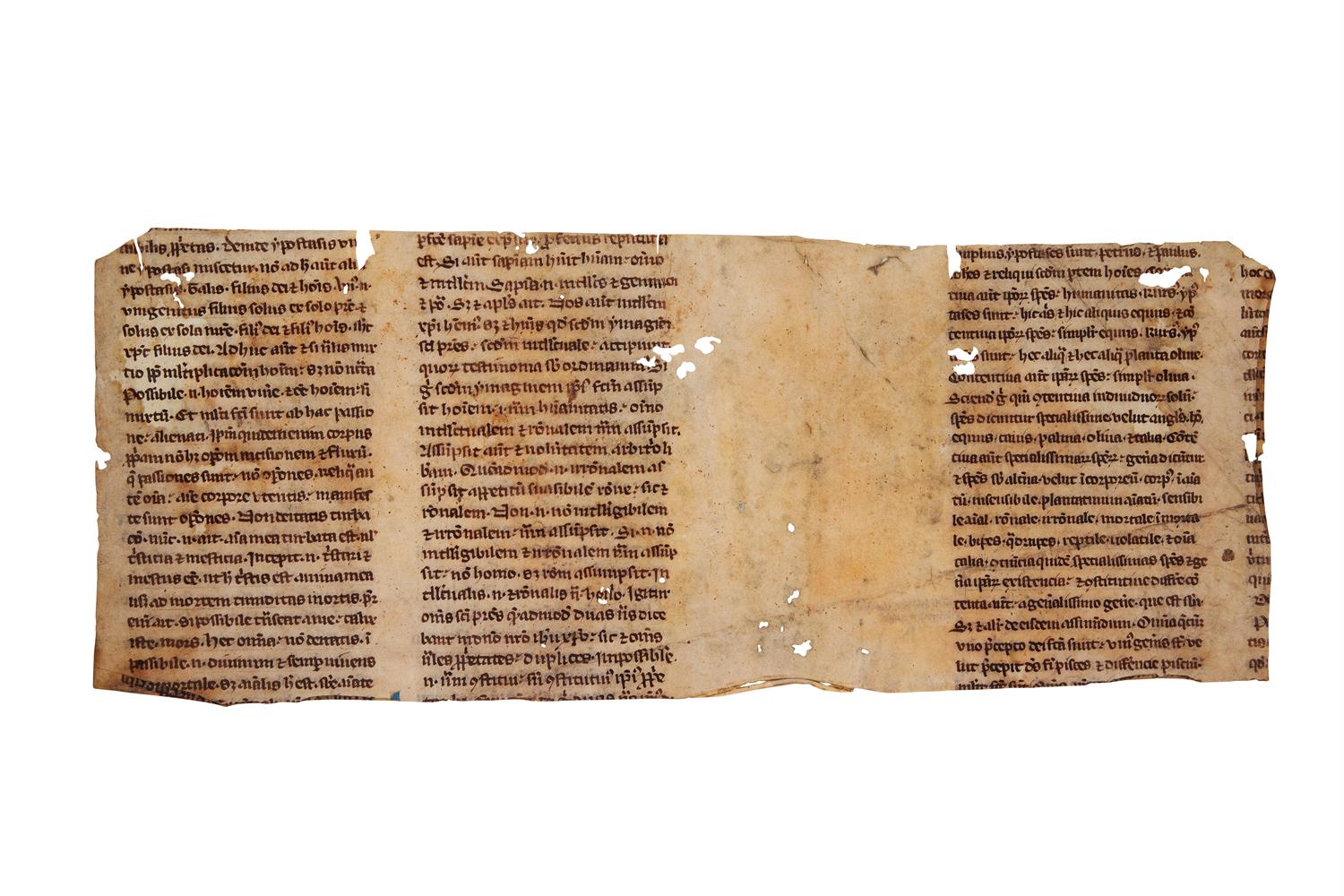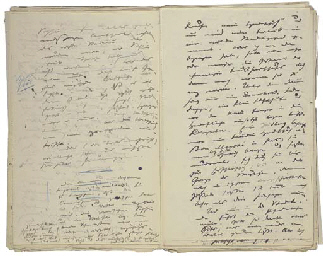Fragment of a manuscript of the works of John Damascene, De fide orthodoxa, in Latin translation of Burgundio of Pisa, manuscript on parchment [probably France, thirteenth century]Cutting from a bifolium (trimmed at head, foot and one vertical edge), with remains of double columns of 23 lines of a fine university hand, yellowed on reverse, small holes, scuffs and spots, a few folds at corners, else fair condition, 302 by 114mm. The term polymath is given to many undeserving men, but accurately describes John Damascene, a Christian monk who lived from c. 675 to 749, making great contributions to law, theology, philosophy and music as well as being named one of the fathers of the Eastern Church. The cutting here includes parts of ch. 8 of the author's Introductio dignitatem elementaris, on "genere et specie" (on humans and various types of animals), summarising part of Aristotle's work on categories, as well as parts of De duabus in Christo voluntatibus. Both were chapters of John Damascene's De fide orthodoxa, the third part of his 'Fountain of Wisdom' (pege gnoseos), a compilation and epitome of the works of the great ecclesiastical writers who preceded him, that became the principal textbook of Greek Orthodox theology and had profound influence on medieval Latin thought. It appeared in only two medieval Latin translations, that of the Greek scholar and Italian jurist Burgundio of Pisa (as here) made in the 1150s, and Robert Grosseteste in the 1230s. The work was fundamental to the scholastic movement, and at least 120 manuscripts of Burgundio's translation are now recorded, as well as several early post-incunabula printings. However, these manuscript witnesses are predominantly late, with none of the twelfth century, and only a handful of the thirteenth century surviving (I. Backus in Journal of the Warburg and Courtauld Institutes, 49, 1986, p. 211).
Fragment of a manuscript of the works of John Damascene, De fide orthodoxa, in Latin translation of Burgundio of Pisa, manuscript on parchment [probably France, thirteenth century]Cutting from a bifolium (trimmed at head, foot and one vertical edge), with remains of double columns of 23 lines of a fine university hand, yellowed on reverse, small holes, scuffs and spots, a few folds at corners, else fair condition, 302 by 114mm. The term polymath is given to many undeserving men, but accurately describes John Damascene, a Christian monk who lived from c. 675 to 749, making great contributions to law, theology, philosophy and music as well as being named one of the fathers of the Eastern Church. The cutting here includes parts of ch. 8 of the author's Introductio dignitatem elementaris, on "genere et specie" (on humans and various types of animals), summarising part of Aristotle's work on categories, as well as parts of De duabus in Christo voluntatibus. Both were chapters of John Damascene's De fide orthodoxa, the third part of his 'Fountain of Wisdom' (pege gnoseos), a compilation and epitome of the works of the great ecclesiastical writers who preceded him, that became the principal textbook of Greek Orthodox theology and had profound influence on medieval Latin thought. It appeared in only two medieval Latin translations, that of the Greek scholar and Italian jurist Burgundio of Pisa (as here) made in the 1150s, and Robert Grosseteste in the 1230s. The work was fundamental to the scholastic movement, and at least 120 manuscripts of Burgundio's translation are now recorded, as well as several early post-incunabula printings. However, these manuscript witnesses are predominantly late, with none of the twelfth century, and only a handful of the thirteenth century surviving (I. Backus in Journal of the Warburg and Courtauld Institutes, 49, 1986, p. 211).





.jpg)

.jpg)





Try LotSearch and its premium features for 7 days - without any costs!
Be notified automatically about new items in upcoming auctions.
Create an alert